Census 2020
The 2020 Census will shape funding for many critical education programs in Texas. An accurate count will help Texas provide quality early childhood education, feed our low-income students, and better serve our special education population.
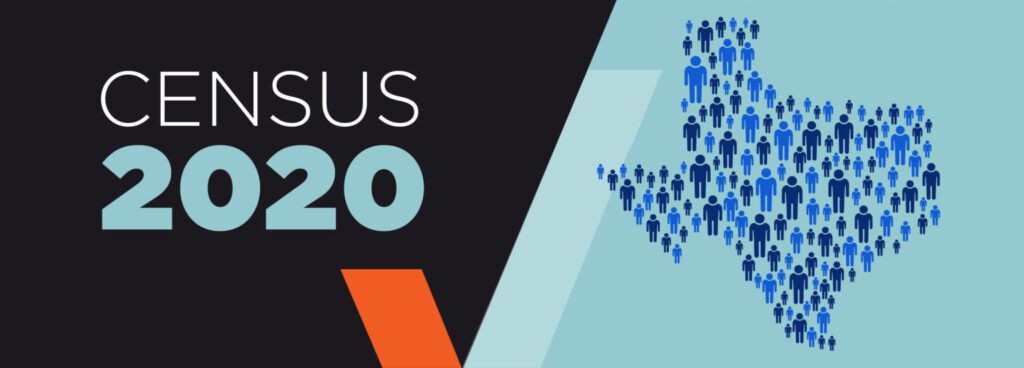
Be Informed
The COVID-19 outbreak is creating outreach challenges that threaten the accuracy of the 2020 Census count. Whether it’s by phone, email, or video, Texas educators are connecting with students and families on a daily basis. This page gives educators the information and resources they need to serve as conduits in an effort to help communities be counted. It takes ten minutes to make an impact on the next ten years. Stand up for Texas students. Respond to the 2020 Census and share resources to encourage others to do the same.
Census Response Rates
Nation 66.1% | Texas 61.8%
*Last updated September 20, 2020
Animated GIFs



Zoom Background
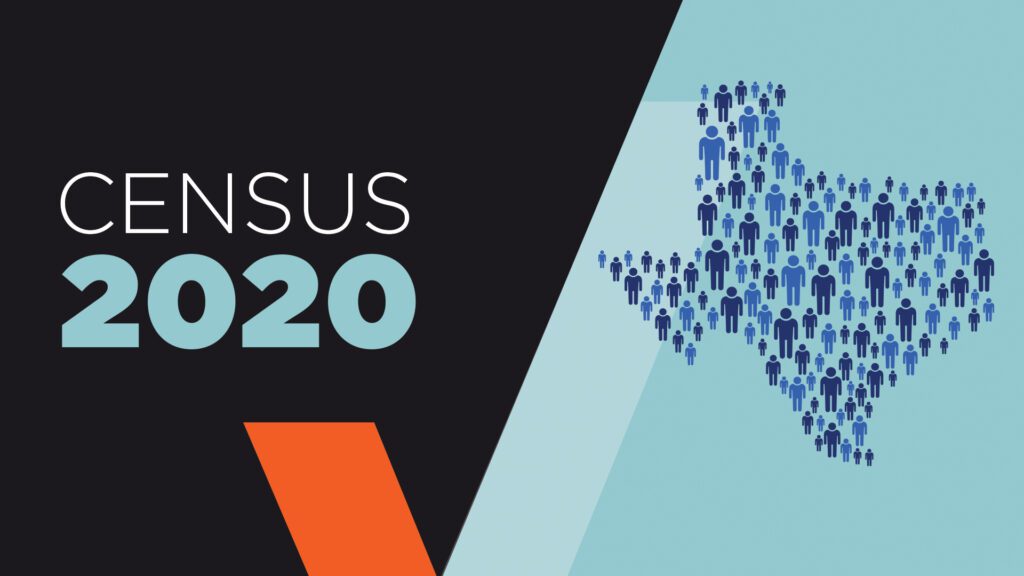
Facebook and Twitter Cards
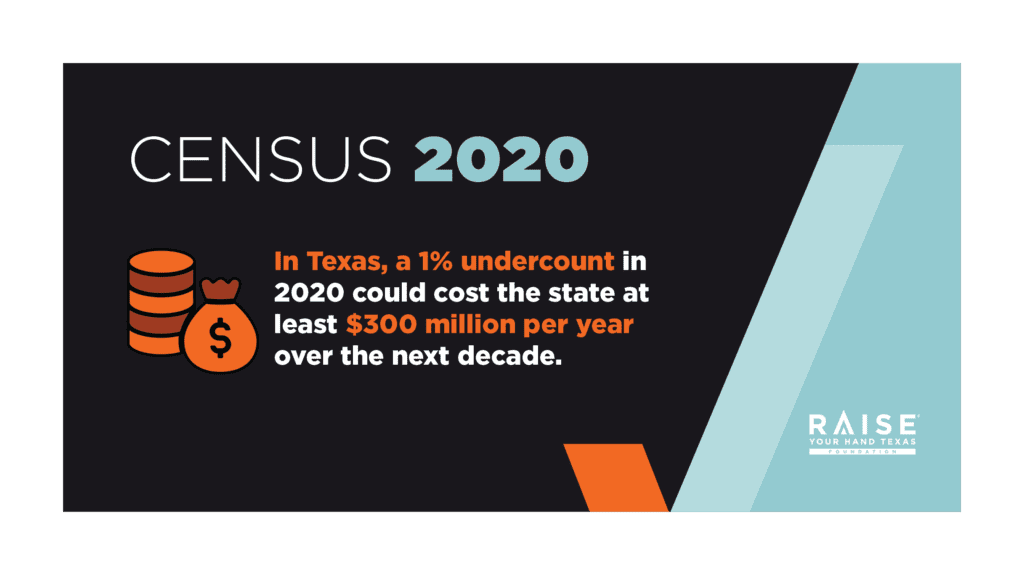
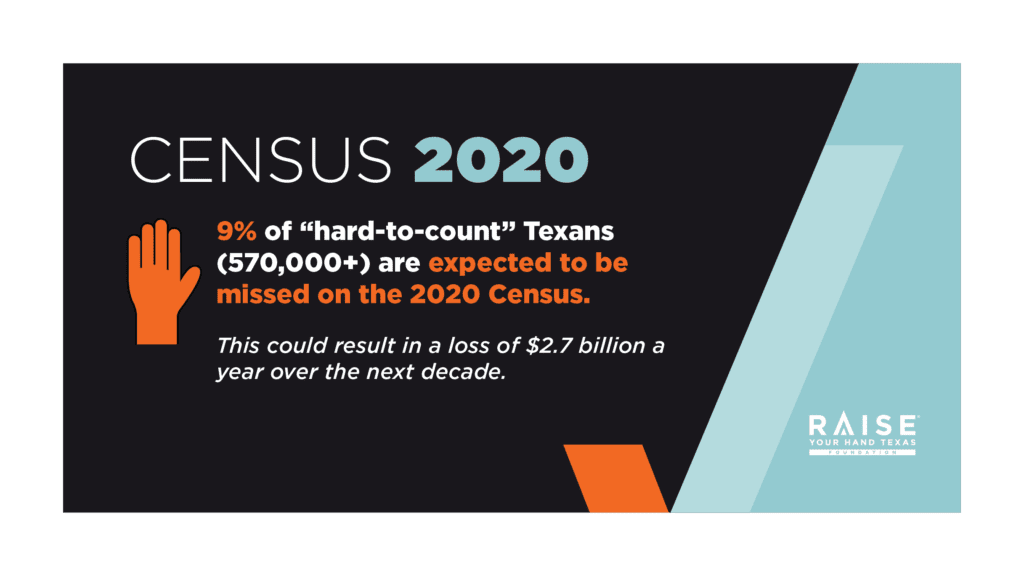
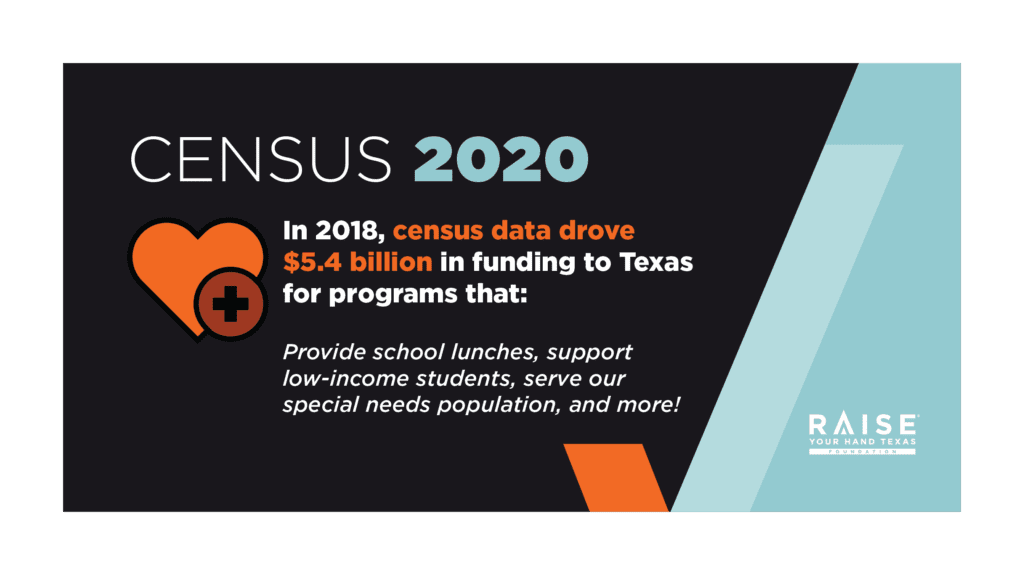
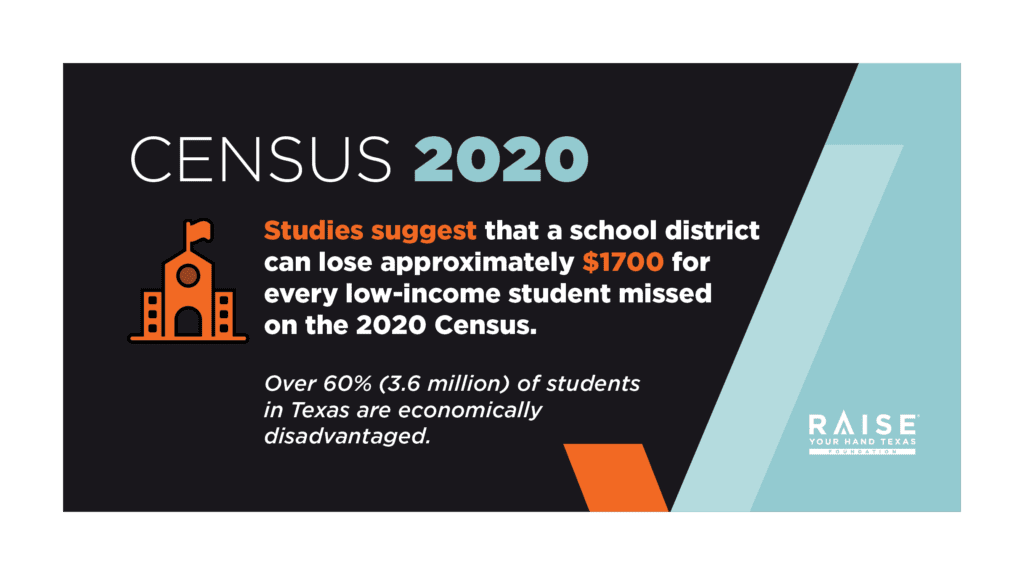
Instagram Cards
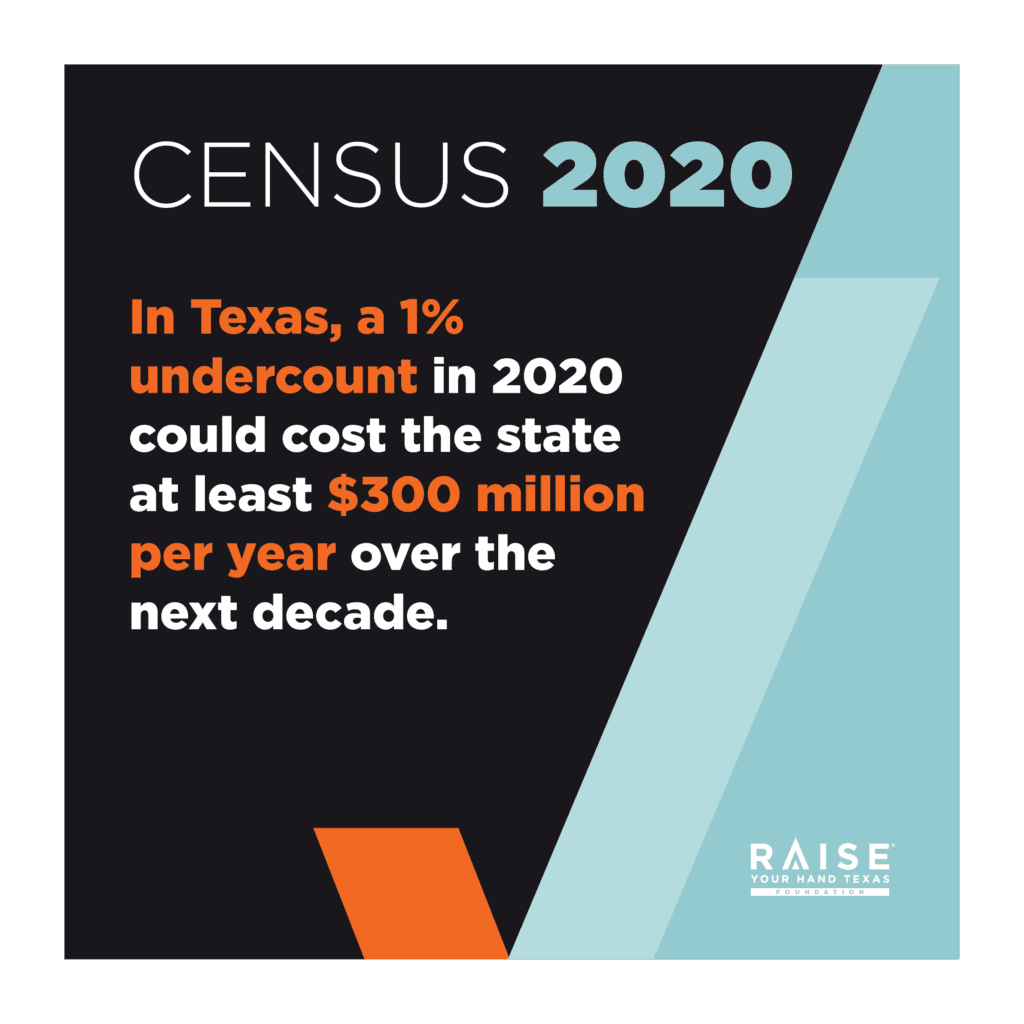
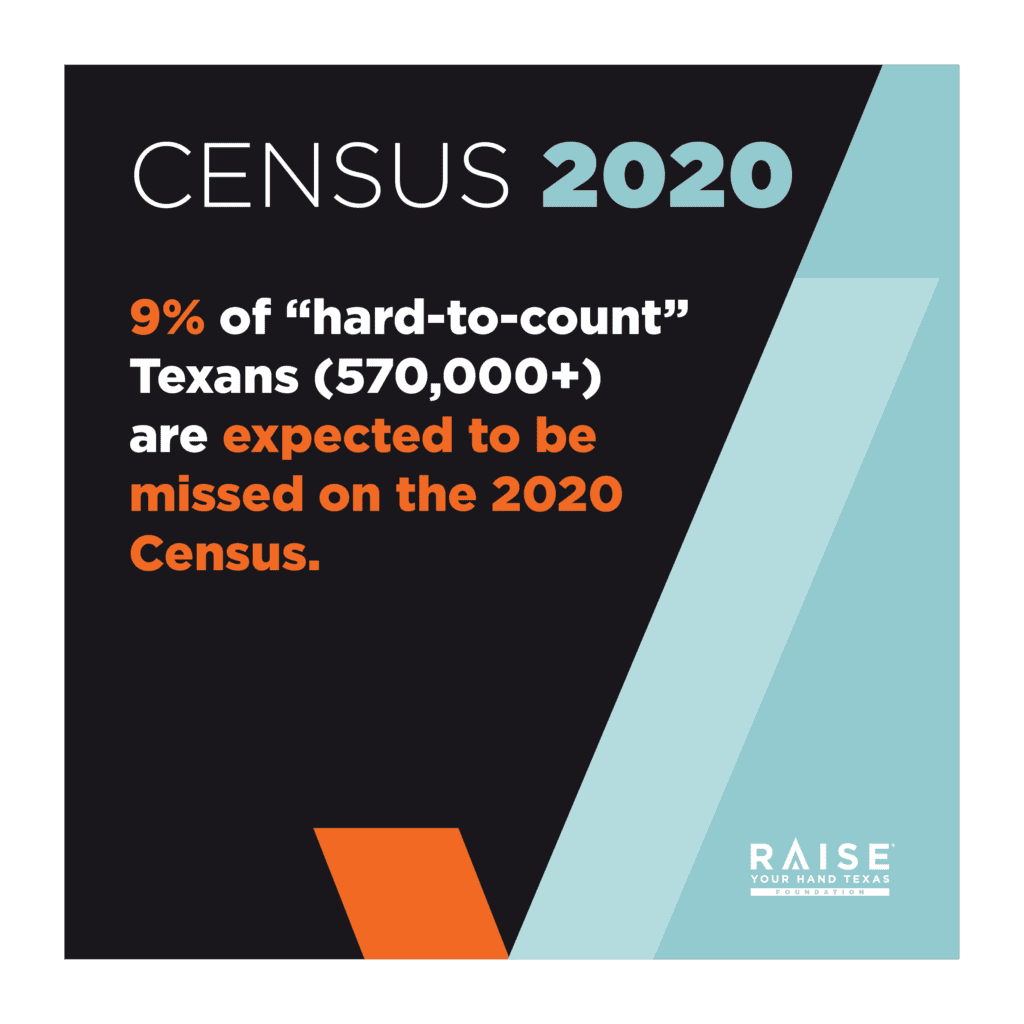
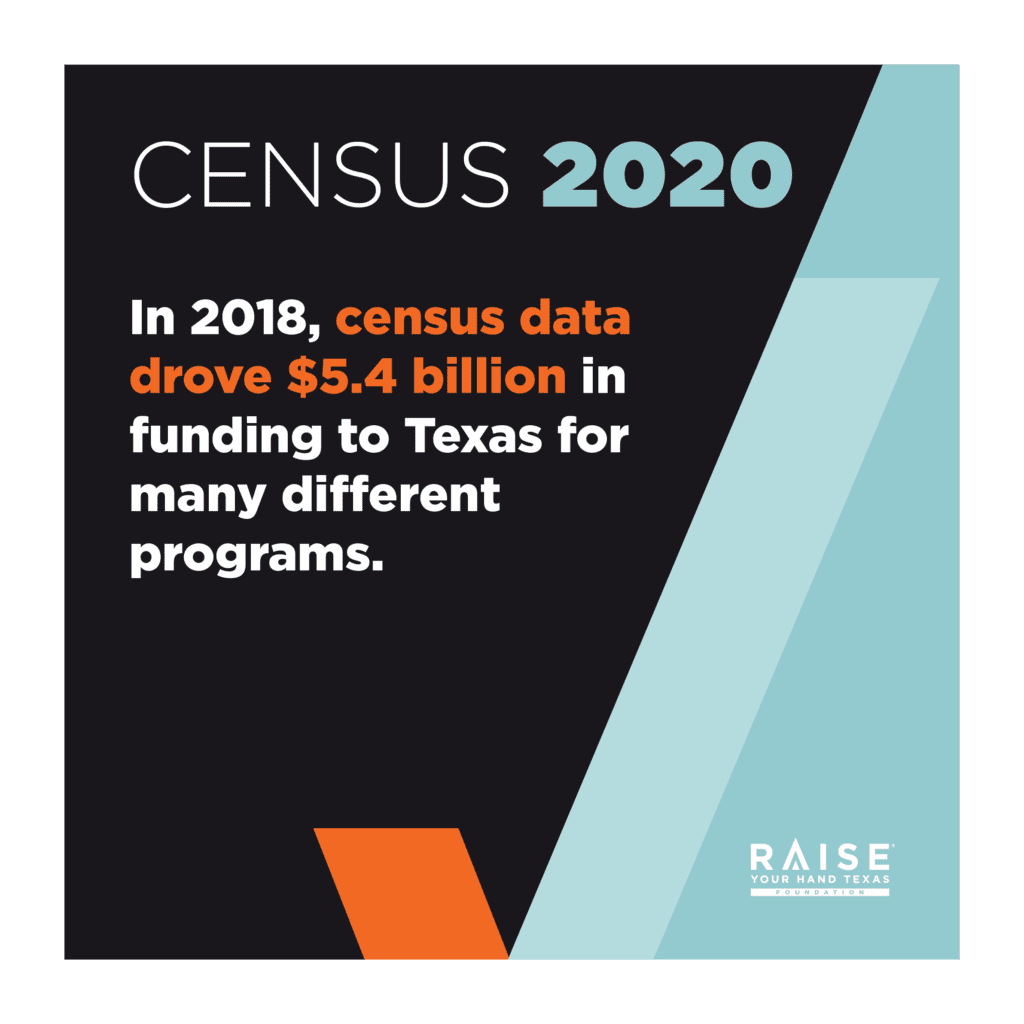
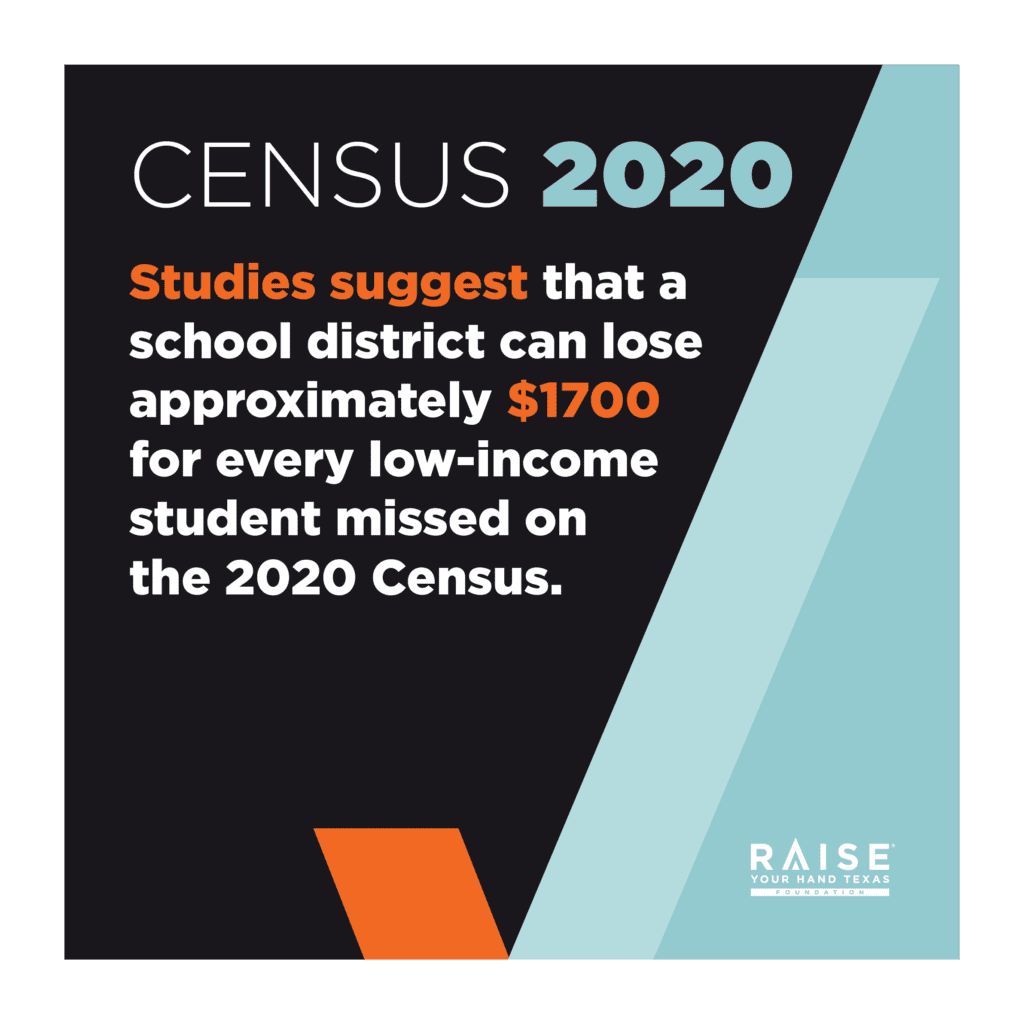
Census Facts
1 percent undercount
1). In Texas, a 1 percent undercount in 2020 could result in a federal funding loss of at least $300 million per year over the next decade. The potential funding loss could amount to $3 billion over 10 years for each percent of the population that is not counted.
25 percent of the population
2). In Texas, 25 percent of the population (over 6 million people) live in “hard-to-count” communities, where past self-response rates have been particularly low. Studies project 9 percent of the “hard-to-count” population (570,000+) will not be tallied in 2020 resulting in a loss of $2.7 billion per year in federal funding for the next decade.
$5.4 billion in federal funding
3). Through Census-based data, Texas received more than $5.4 billion in federal funding in the fiscal year 2018 for educational programs such as:
- National School Lunch Program: $1.5B
- Title I grants to School Districts: $1.5B
- Special education grants: $1.0B
- School Breakfast Program: $633M
3.6 million students
4). An accurate count is needed to determine the amount of federal funding Texas receives to support low-income students. A national study has shown that a school district can expect to lose an average of $1,700 for each low-income student not counted. Low-income families are considered a “hard-to-count” population. According to the Texas Education Agency, over 60 percent (3.6 million) of students in the state are economically disadvantaged.
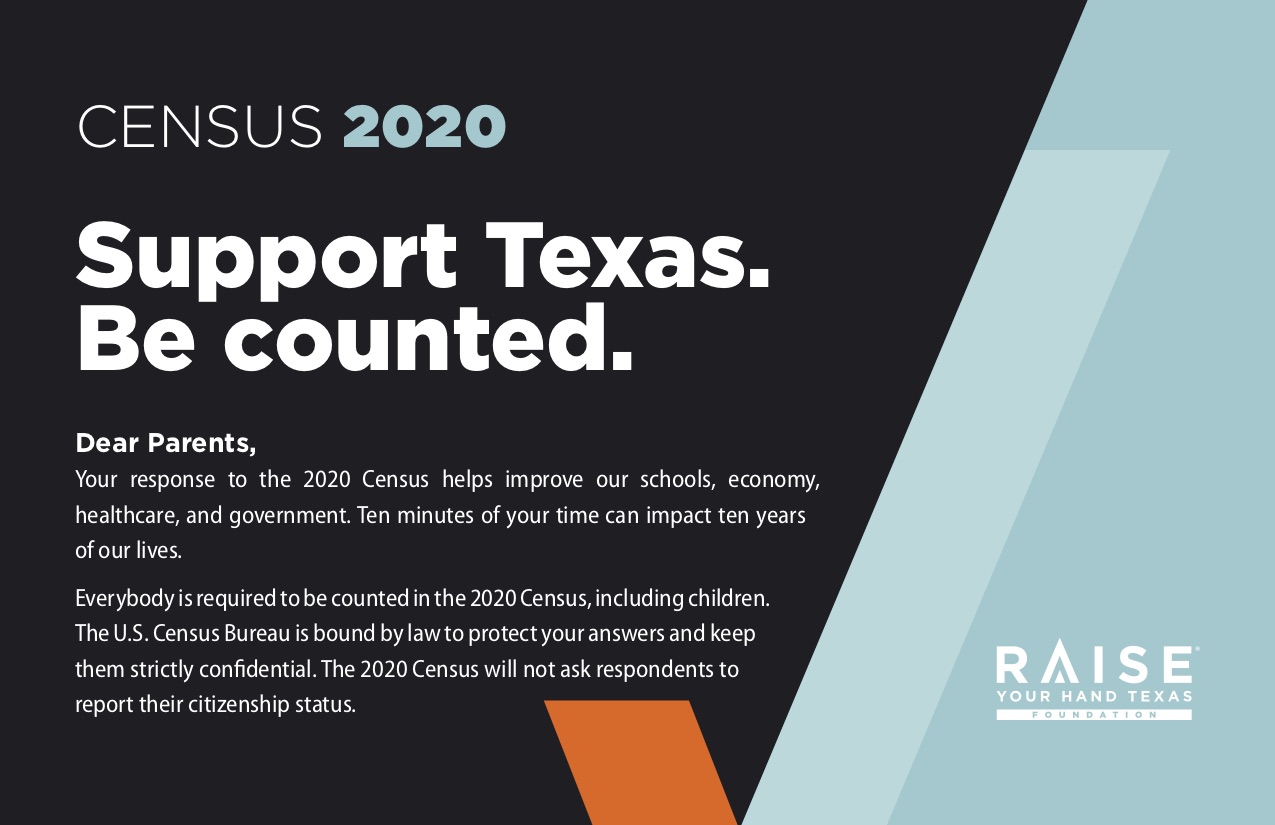
1. Share this flyer with your campuses and communities. Help families see why responding to the 2020 Census matters. You can share digitally or send physical copies home during school lunch distributions.
2. Incorporate 2020 Census materials into your lesson plans. The U.S. Census Bureau’s Statistics in Schools (SIS) program offers over 200 activities and resources in a variety of subjects for grades pre-K through 12. Don’t forget to check out their Home and Distance Learning Activities.
3. Check out the Texas Counts 2020 Census Toolkit for information and tools to help you spread the word about the 2020 Census.
4. Use the Mobility Blueprint 2020 Census Tracker to find the census response rates of census blocks and apartment complexes within your school district! For instructions on how to use the map, click here. Learn more about Mobility Blueprint here.
